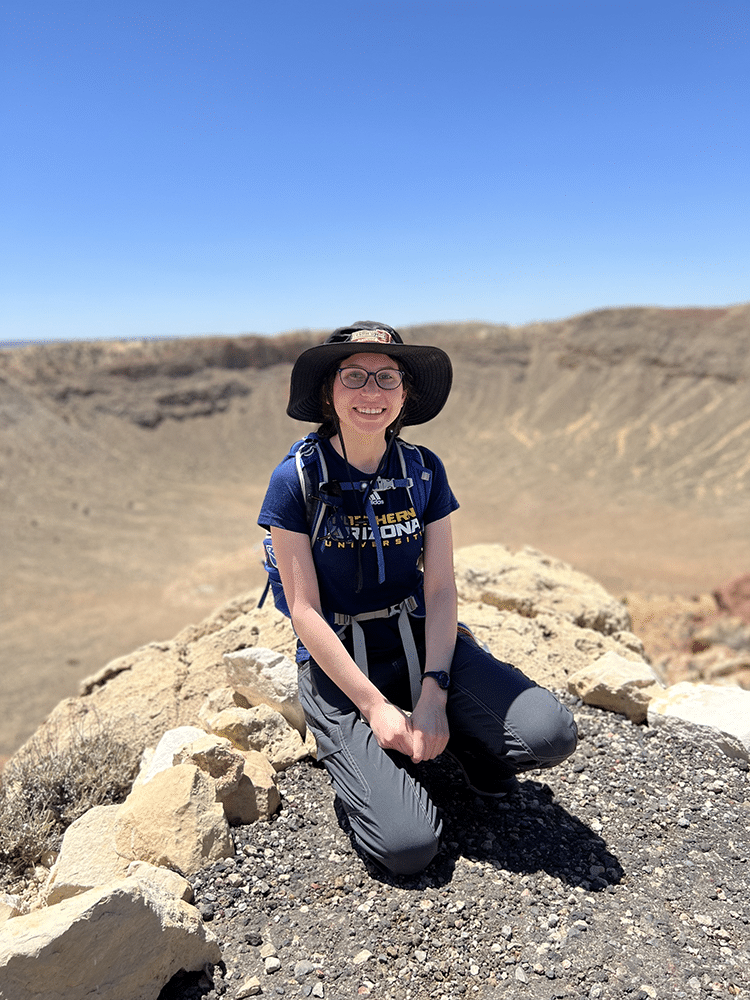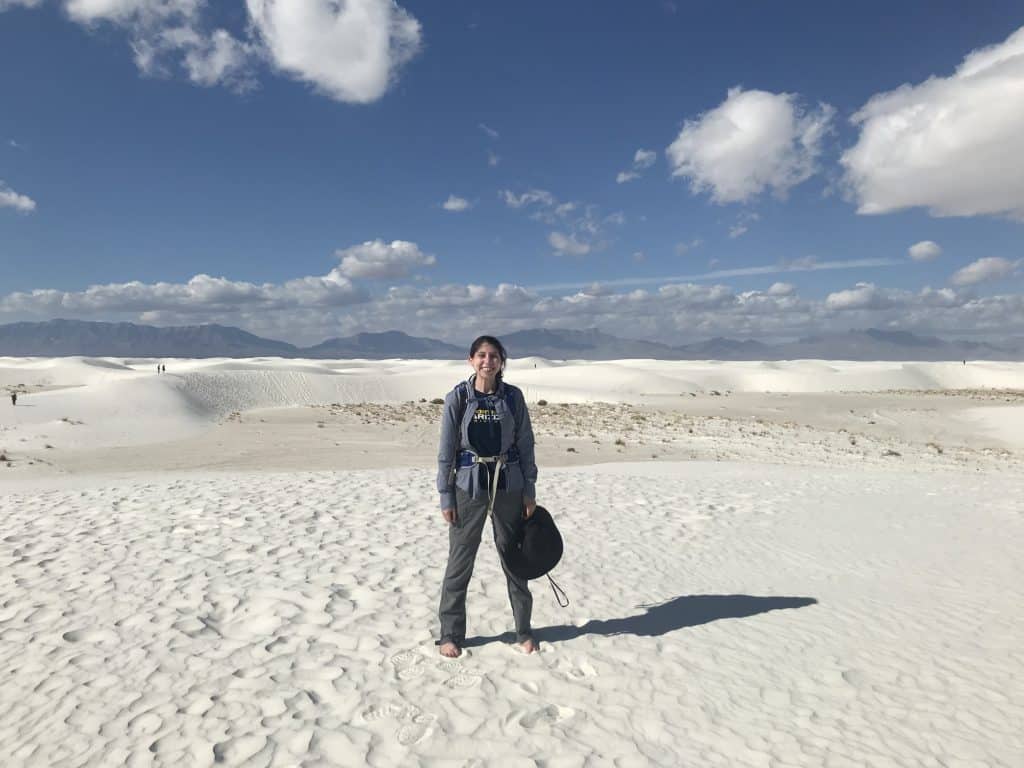Anna Baker has been on a path toward a career in research since she presented her first research poster at the national Lunar and Planetary Science Conference in the ninth grade.
Years later, Baker, a second-year Ph.D. student in the Department of Astronomy and Planetary Science who researches Mars’ windblown sand dunes, was selected for the National Science Foundation’s Graduate Research Fellowship Program. This award will help her continue on that path, as it provides an annual stipend and an education allowance as well as mentoring and networking opportunities, all of which allow STEM graduate students to be more independent in their research and branch out from grant-funded projects.
“Competition for NSF Graduate Research Fellowships is intense, and they are awarded to a small number of the nation’s top science and engineering graduate students,” said Jason Wilder, NAU’s vice president for research. “The fact that Anna chose to pursue her graduate degree at NAU reflects the incredible strength of our faculty and the impact of the science and discovery taking place at NAU.”
NAU also had three honorable mentions:
- Keven Griffen, a Ph.D. student in the School of Forestry
- Michael Robinson, a 2016 graduate in civil engineering who is a graduate student at the University of Nevada, Reno
- Makenzie Meacham, a 2021 graduate in environmental sciences who is a graduate student at Louisiana Tech

What about those Martian sand dunes?
Baker, who came to NAU in part because of the program’s connections to the USGS Astrogeology Center, said the surface of Mars is mostly quiet; it’s been mostly cold, dry and geologically quiet for more than 3 billion years. But the key word there is “mostly”—one process that has been consistently active in that time is wind, which has played a major role in shaping much of the surface of Mars that we observe today.
“Mars’ windblown sand dunes are of particular interest because they represent the intersection of surface and atmospheric processes and provide clues for understanding both,” she said. “If we understand these processes, we can observe the ways in which sand and rocks have been moved and shaped by wind in order to learn about Mars’ modern and ancient atmosphere.”
She, along with DAPS professor Devon Burr and physics student Rachel Fry, is doing lab experiments along with data from Mars missions to try to determine where the sand that makes up Mars’ dune fields originates. They actually simulate wind transport of Mars analog sands and measure changes in composition, texture, grain size and grain shape over time. Those findings then will aid in the interpretation of spectroscopic data from orbiting spacecraft and from Mars rovers to identify the sources of the sands that make up Martian dunes.
The goal of the experiments is to improve methods for mapping Martian sand transport pathways and explain how sediment is transported and cycled on the surface of Mars.
This research will ultimately increase Mars exploration potential and could expand the reach of Mars’ rovers and help direct future remote sensing, making public investment in space exploration more effective, Baker wrote in her application. She also plans to create a teaching module for undergraduate students on these processes and design an educational field trip as part of her work with the International Association for Geoscience Diversity that is accessible to students with disabilities. As a queer woman with disabilities, she is committed to inclusivity and accessibility not only in her field but in all STEM fields.
Burr, who helped recruit Baker to NAU, said this works builds on Baker’s extensive work in analyzing rock samples from the moon, spectroscopic data of the Martian surface and geophysical data from Mars. However, it still was a new subject that she had to gain experience in before starting this research. That she gained knowledge and learned the techniques sufficient to win a national scholarship after only three semesters at NAU speaks to her flexibility of thought and broad interest in all planetary sciences.
“The successful GRFP award signifies Anna’s extensive investment of thought and effort into this research project,” Burr said. “It evidences the creativity and problem-solving approach that Anna brings to her work, along with a willingness to experiment, which is a vital quality for any researcher.”
Baker also had a little help from a unique class DAPS offers to graduate students. Astronomy professor Josh Emery, who teaches the graduate-level Writing for Fellowships course, said this funding will allow Baker to focus on research during the remainder of her doctoral program, which is a rare and well-earned opportunity.
“Anna is an excellent researcher. We knew that from her application packet before accepting her into the Ph.D. program, and she has consistently demonstrated that excellence in her two years here,” he said. “The GRFP also is a prestigious fellowship that recognizes her integrated quality as a scholar and is therefore a great accolade she will carry with her for the rest of her life.”
Heidi Toth | NAU Communications
(928) 523-8737 | heidi.toth@nau.edu




